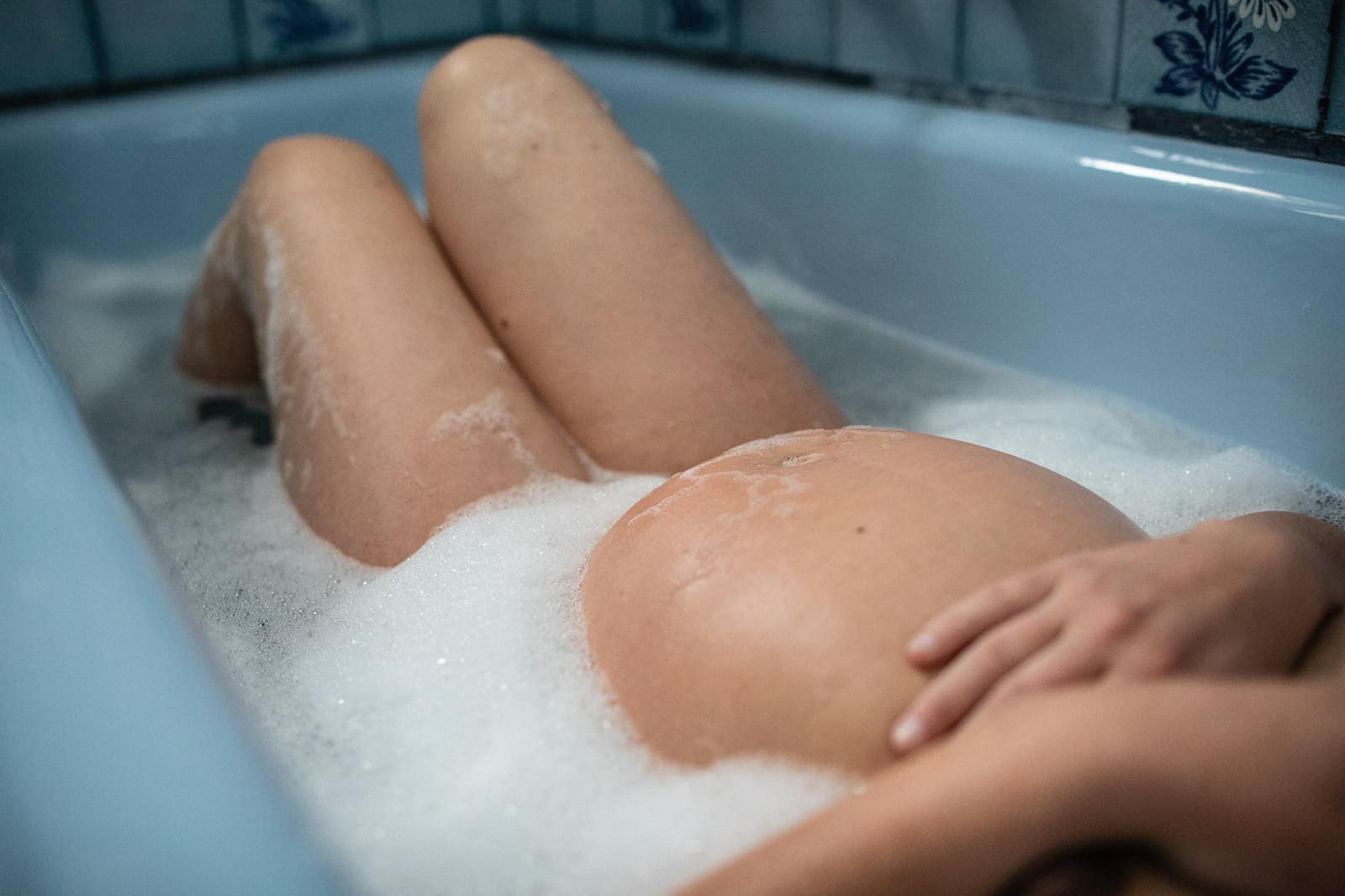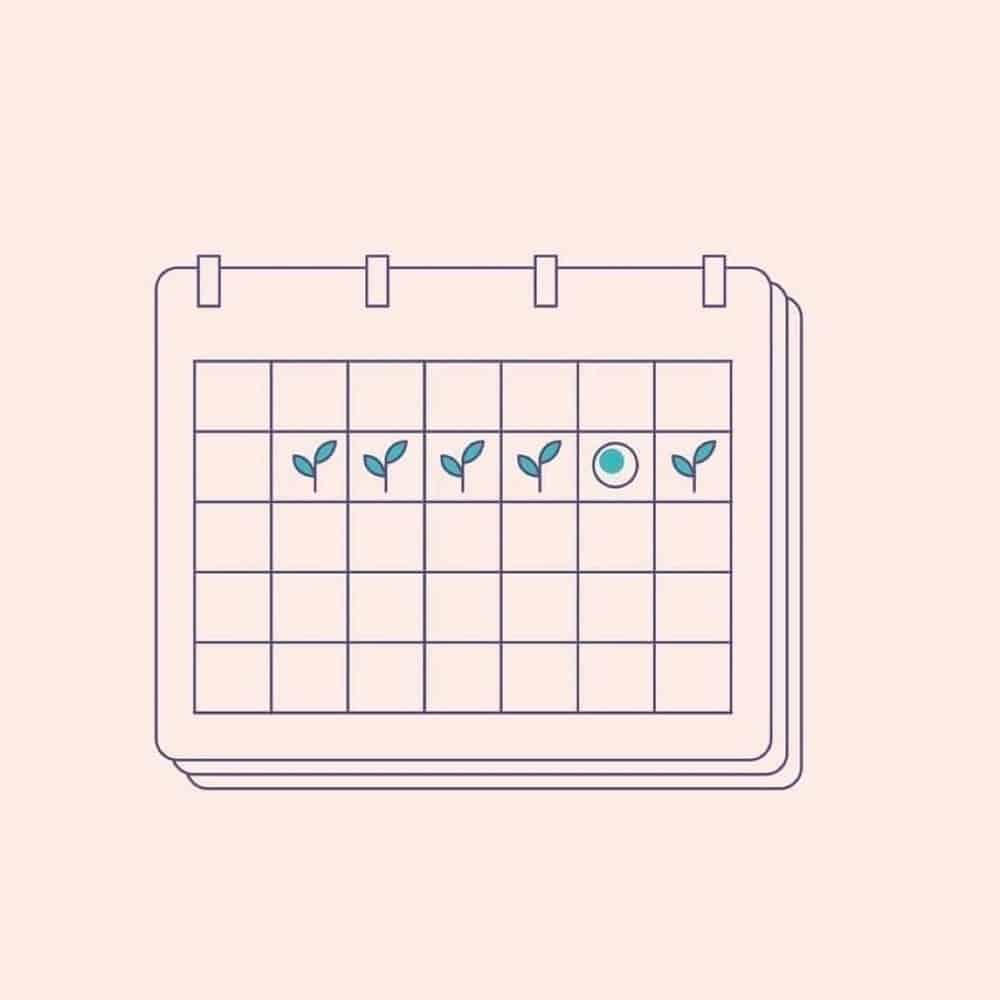Ovulation

Understanding you menstrual cycle and your fertile window is essential if you are trying to conceive a baby.
What is your Fertile Window?
In your menstrual cycle, you have a 3-5 day window of opportunity to conceive a baby. This occurs just before and after ovulation when an egg is released from the ovary into the fallopian tube. In a typical 28-day menstrual cycle, you would ovulate on day 14 but of course, this isn’t always the case and if you want to conceive, you shouldn’t rely solely on this number. And if you don’t have a 28-day cycle? You can assume that ovulation has occurred 14 days before your period begins. We really encourage you to get to know your cycle so you can identify your fertile days around ovulation.
What is Ovulation?
Pre-ovulation (typically day 6-14 in a 28-day cycle): one follicle matures into an egg while the rest degenerate. The lining of your uterus rebuilds.
Ovulation (typically day 14-21 in a 28-day cycle): the egg is released into the fallopian tube and is ready for fertilisation. The ruptured follicle in the ovary forms a gland called corpus luteum, which produces the hormone progesterone to keep the uterine lining thick (the perfect place for a growing embryo).
What Hormones are Involved in Ovulation?
Once oestrogen reaches its peak in your cycle it signals to your body that you’re ready to release an egg. To help with this process (ovulation) your pituitary gland releases a big surge of Luteinising hormone (LH) which prompts Follicular stimulating hormone (FSH) to release, too. Together they encourage the egg to leave the ovary. Your testosterone levels also peak around this time which can make you feel more driven and productive. After ovulation, the ruptured follicle in your ovary forms the corpus luteum, a gland that produces a lot of progesterone, enough to maintain the lining of the womb in case an egg is fertilised.
What is Ovulation Tracking
Ovulation tracking is a simple process that can help you identify which days you’re most fertile. While you can do this by closely observing your cycle over a three-month period (taking note of your basal body temperature and vaginal mucous), many women opt for ovulation testing kits that are readily available in supermarkets and pharmacies. When you pee on the stick (much like a pregnancy test), the test reacts to the luteinising hormone, the one that surges just before ovulation.
What is Clinic Ovulation Testing?
Sometimes it can be tricky to know exactly when you’re ovulating. If you have been trying to conceive and you’re looking for expert guidance, ovulation testing via a blood test and ultrasound can help you identify your fertile days. This non-invasive process is very simple and can put your mind at ease if you feel that your at-home tests aren’t giving you enough reassurance.
When you have your ovulation tracked by a fertility specialist they will use blood tests from day one of menstruation right through to ovulation to identify the surge of luteinising hormone. They will also use ultrasound to check follicular growth. And then? They’ll give you a call to let you know that you’re pre-ovulation and you’ve got 72 hours to conceive.
Ovulation tracking on the podcast
In episode 253 Jacqueline sings the praises of cycle tracking which helped her conceive her two beautiful girls. Jaqueline describes her first pregnancy as the best curveball of her life and she went on to experience a beautiful water birth after 30 hours of labour. A decade later she was with a new partner and opted to track her cycle through Monash IVF because she was having trouble conceiving. After two rounds she fell pregnant and had a straightforward induction and delivery. A mere eight months after birth she was pregnant again and with her baby in a frank breech position, she began preparing for a breech vaginal birth with Dr Bisits at the Royal Women’s in Randwick. Jacqueline’s story really highlights the importance of having a care provider who empowers and supports you, regardless of your birth complications.
“It’s a great way to pinpoint your most fertile window. They take baseline bloods which is the first day after your period finishes. They then take bloods at different stages through your cycle and an ultrasound to check follicular growth and then in the lead up to your fertile time frame, they’ll do one more round of bloods and then they call you to say: you’ve got 72 fertile hours, go for it! It’s non-invasive and three rounds are completely covered through medicare. It’s also offered to women who just want to understand their cycle. It’s simple and it’s effective and I highly recommend it.”
Our Podcast Picks for You
Categories
Related Products
-
Welcome to the First Trimester
11 reviews$67.00An informative and comforting 5-part audio course guiding you through the first 12 weeks of pregnancy.
Get your copy of our Perineal Massage Guide in your inbox
Keep Reading
We think you might enjoy these articles
@AustralianBirthStories
Follow along with us
@AustralianBirthStories
Follow along with us
@AustralianBirthStories
Follow along with us
@AustralianBirthStories
Follow along with us
@AustralianBirthStories
Follow along with us
@AustralianBirthStories
Follow along with us
@AustralianBirthStories
Follow along with us
@AustralianBirthStories
Follow along with us
@AustralianBirthStories
Follow along with us
@AustralianBirthStories
Follow along with us
@AustralianBirthStories
Follow along with us
@AustralianBirthStories
Follow along with us





